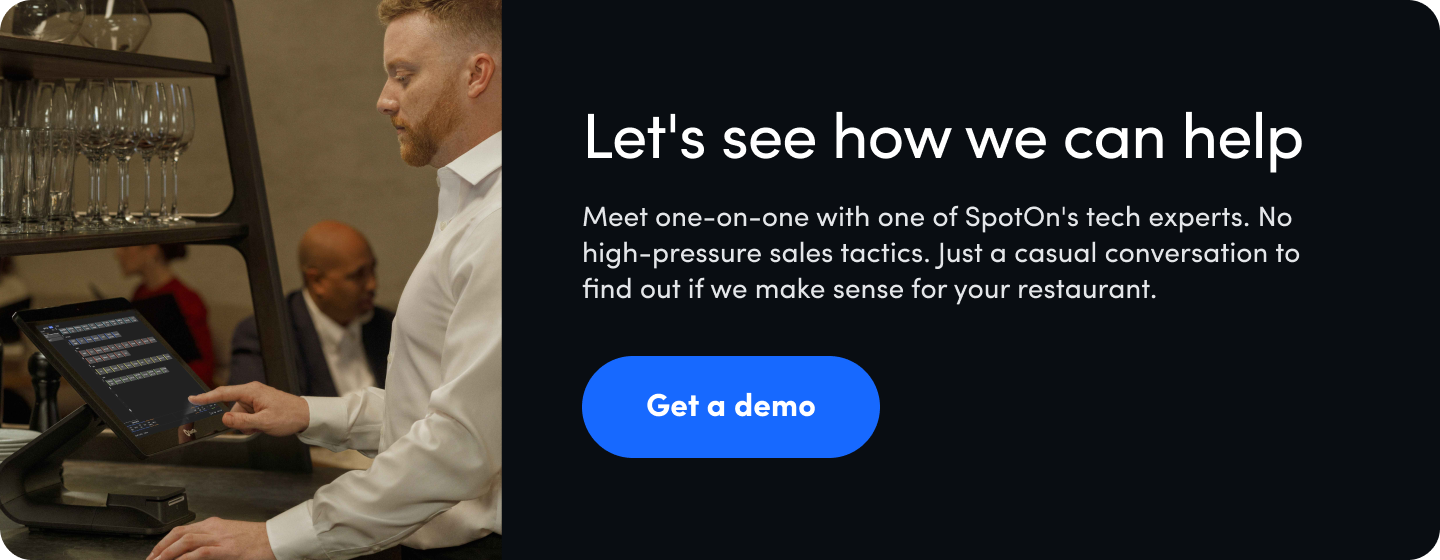Running a restaurant is expensive. The neverending quest for profitability means that trimming the fat, recouping costs, and finding new ways to be efficient are top of mind for many restaurant owners. But the reality is, for many restaurants, there is only so much wiggle room.
Recently, service charges have become a popular counterbalance to rising labor costs. A service charge is a mandatory fee, often a fixed percentage between 5% and 20%, that's added to the customer's bill and goes towards service staff expenses. Some restaurants implement a service charge in lieu of tips to create a tip-pooling system. It's also used to offset employee health insurance costs or ensure more equitable compensation for back-of-house staff members.
They're hardly new. Automatic gratuity for large parties has long been a restaurant industry mainstay. But during the COVID-19 pandemic, many restaurants added service fees which, unlike tips, are mandatory.
Service charges and tips are not the same. Tipping is as inextricable from the hospitality industry as masking tape and deli containers. It's not going anywhere. The permanency of service fees is still in flux, especially as legislatures across the country put forward bills to ban junk fees, often including restaurant service charges under that umbrella.
Here's a look at service charges, their role in the restaurant industry, and why you shouldn't call them tips.
The history of the service fee
Service charges have always existed, and not just in the restaurant industry. Banks charge service fees through ATMs. Hotels and travel websites include service charges in their list of fees. Ticketing platforms, small and large, charge service fees even when the theater or concert tickets are delivered electronically.
Restaurants have always charged some mandatory service charges, distinct from tips. Automatic gratuity, bottle service, corkage fees, and valet fees are all examples of restaurant service charges.
During the COVID-19 pandemic, service charges became a popular way to pay staff more and acknowledge the risk they were taking. From the front-of-house staff interacting with guests to the kitchen staff working in close quarters, many restaurant owners saw service charges as a tool to retain employees and supplement tip income while the industry as a whole was hurting.
As the pandemic began to fade, some restaurants kept service charges, drawing frustration from guests who saw a lack of transparency and ballooning prices. But the restaurant business hasn't gotten any easier post-pandemic. Inflation, supply chain issues, competition, and staff burnout persist. Profitability is a top concern but by no means a guarantee for most restaurants.
How is the service fee different from tips?
Tips still loom large in restaurant culture. Even though guests are more likely to select a percentage on a handheld POS system than leave cash tips, people see tipping as a way to say thank you for excellent service. Of course, for restaurant workers, it's more than a "thank you"—for tipped employees, it's a crucial part of their income and can have a big impact on their financial well-being.
Tips are optional, but service charges are not. Another main difference between tips and service charges is where the money goes. In states that allow for a tip credit, tips make up a share of a wait staff member's wages. Some states' minimum wage structure eliminates the tip credit so that the tip line is on top of the hourly wage. Regardless, tips go to the restaurant staff.
A restaurant service charge, on the other hand, is not obligated to go to the employees. Hypothetically, restaurant operators can apply this money wherever they'd like. It's what makes some consumers skittish about paying restaurant service charges instead of tips. Restaurant service charges are not as regulated as wages and tips.

Why do restaurant owners impose service fees?
Restaurant service charges aren't the norm. That means any operator implementing a service fee must consider the pros and cons, how service staff will communicate the service charge to guests, and how they will allocate service charges among the hourly staff.
Here are a few reasons restaurant operators charge service fees.
1. Cover operational costs
The long list of restaurant overhead costs includes rent, utilities, insurance, credit card fees, linen, disposable goods, internet, and other costs. But for many operators, labor is the biggest bucket.
Whether they're paying top dollar for talented chefs and professional servers or simply ensuring there's enough wait staff to cover the busy Friday night shift, paychecks represent a big segment of the operational pie. Implementing service charges can help restaurants offset their cost of labor while maintaining good service without eye-popping menu prices.
2. Eliminate tipping
Tipping is controversial. Many restaurateurs have experimented with eliminating tipping from their business model. However, exceptional service isn't free. An automatic service charge can give service staff a more consistent income.
Tipping can also create a wedge between the back- and front-of-house, the former of which doesn't typically receive tips. But no great restaurant can exist without one or the other. Often, service charges are divvied amongst the whole team, helping back-of-house employees make more money than they would otherwise.
3. Pay for employee healthcare and benefits
Depending on state and local laws, hourly vs. salaried staff, and other factors, restaurants might be obligated to provide health insurance and other benefits for their employees. This can be challenging, particularly for independent restaurants and small operations that don't accrue large profit margins.
A service charge can compensate for these expenses, especially when they suddenly increase.
4. Stay competitive in a tough labor market
Employee turnover is common in the industry. It costs more to train and onboard new employees than to keep your existing ones. In the wake of the pandemic, as many restaurant workers left the industry, fewer employees created a competitive labor market. Depending on the season, location, and concept, plenty of restaurants are still experiencing this phenomenon.
Where staff members are compensated fairly for the service provided, there's more job satisfaction and less incentive to leave for greener pastures. Service charges that go directly to the employees or pay for benefits and other incentives can be tools for retaining employees.
5. Pay employees a liveable wage
The high cost of living affects more than just restaurant guests. If a restaurant's guests are dealing with rising costs, so are the restaurant employees. An excellent dining experience and exceptional service don't come cheap. A service charge can be a significant addition to a server's take-home, helping employees surpass minimum wage and increasing equity among the staff.
Is the service fee optional?
Various fees might be added to a restaurant guest's bill. Delivery fees are another mandatory service charge that addresses the high cost of the dining experience. These service charges are often not optional, making them different from tips.
Auto gratuity and the "suggested service charge" exist in a middle ground. They're still somewhat dependent on the service quality. If diners leave extremely disappointed, it's hard for the restaurant to implement a service charge that depends on the service worker fulfilling their end of the agreement. But very few guests are likely to ask that a reasonable service charge be removed, so it is a fringe scenario.
How can restaurants communicate the service charge and inform guests?
The hospitality industry is about people. Unfortunately, people often disagree. For operators, part of the challenge of implementing a service charge—or any kind of additional fee—is communicating the necessity to guests.
To increase transparency around extra fees, operators can explain the fee added to the bill on their website and again on their menu. Servers need proper training on communicating the service charge and its purpose, as well as providing clear direction on whether guests may or definitely should not tip on top of the service charge.
State and local governments have started to argue against the existence of the service charge. But restaurants create unique circumstances. The total bill at a local Thai restaurant is calculated very differently than the checkout page of a travel website and involves multiple administrative fees. Restaurants need specific rules rather than general application.
Do I tip on top of the service charge?
When restaurants add a 20% service charge, an additional tip is more than likely not required (assuming the service charge is distributed fairly). However, if the service charge represents a small percentage of the total bill and specifically goes to healthcare, benefits, or another purpose, it's best practice to leave a tip that will go directly to your server.
The service charge requires transparency (and guest buy-in).
According to a recent Technomic survey, 41% of guests are unlikely to recommend a restaurant that charges a 20% service charge. But while the service charge is unpopular with many guests currently, that doesn't mean it will remain that way in the future.
Just as the favorability of tipping has ebbed and flowed over time, the cultural norms around the service charge are likely to shift. An increasing awareness of how hard it is to run (and work in) a restaurant may impact attitudes towards the service charge over time.
Certainly, guests need transparency. If restaurants can communicate service charges effectively and use them thoughtfully, attitudes could improve. The total bill is still unwritten.















